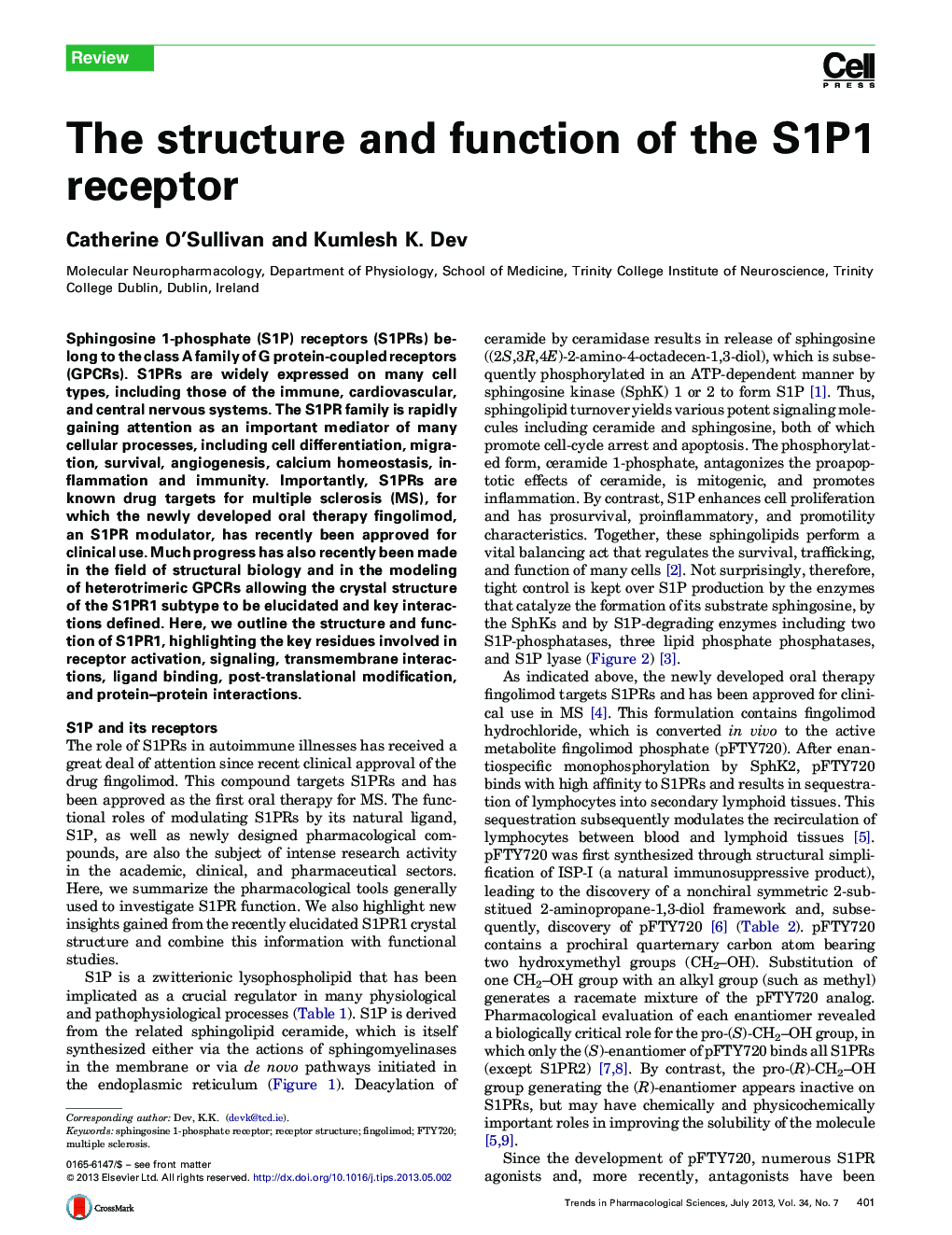| Article ID | Journal | Published Year | Pages | File Type |
|---|---|---|---|---|
| 2572648 | Trends in Pharmacological Sciences | 2013 | 12 Pages |
•Detailed amino acid analysis of the S1P1 receptor.•Overview of post-translational modification of the S1P1 receptor.•Description of S1P1 receptor internalization and persistent signaling.
Sphingosine 1-phosphate (S1P) receptors (S1PRs) belong to the class A family of G protein-coupled receptors (GPCRs). S1PRs are widely expressed on many cell types, including those of the immune, cardiovascular, and central nervous systems. The S1PR family is rapidly gaining attention as an important mediator of many cellular processes, including cell differentiation, migration, survival, angiogenesis, calcium homeostasis, inflammation and immunity. Importantly, S1PRs are known drug targets for multiple sclerosis (MS), for which the newly developed oral therapy fingolimod, an S1PR modulator, has recently been approved for clinical use. Much progress has also recently been made in the field of structural biology and in the modeling of heterotrimeric GPCRs allowing the crystal structure of the S1PR1 subtype to be elucidated and key interactions defined. Here, we outline the structure and function of S1PR1, highlighting the key residues involved in receptor activation, signaling, transmembrane interactions, ligand binding, post-translational modification, and protein–protein interactions.
